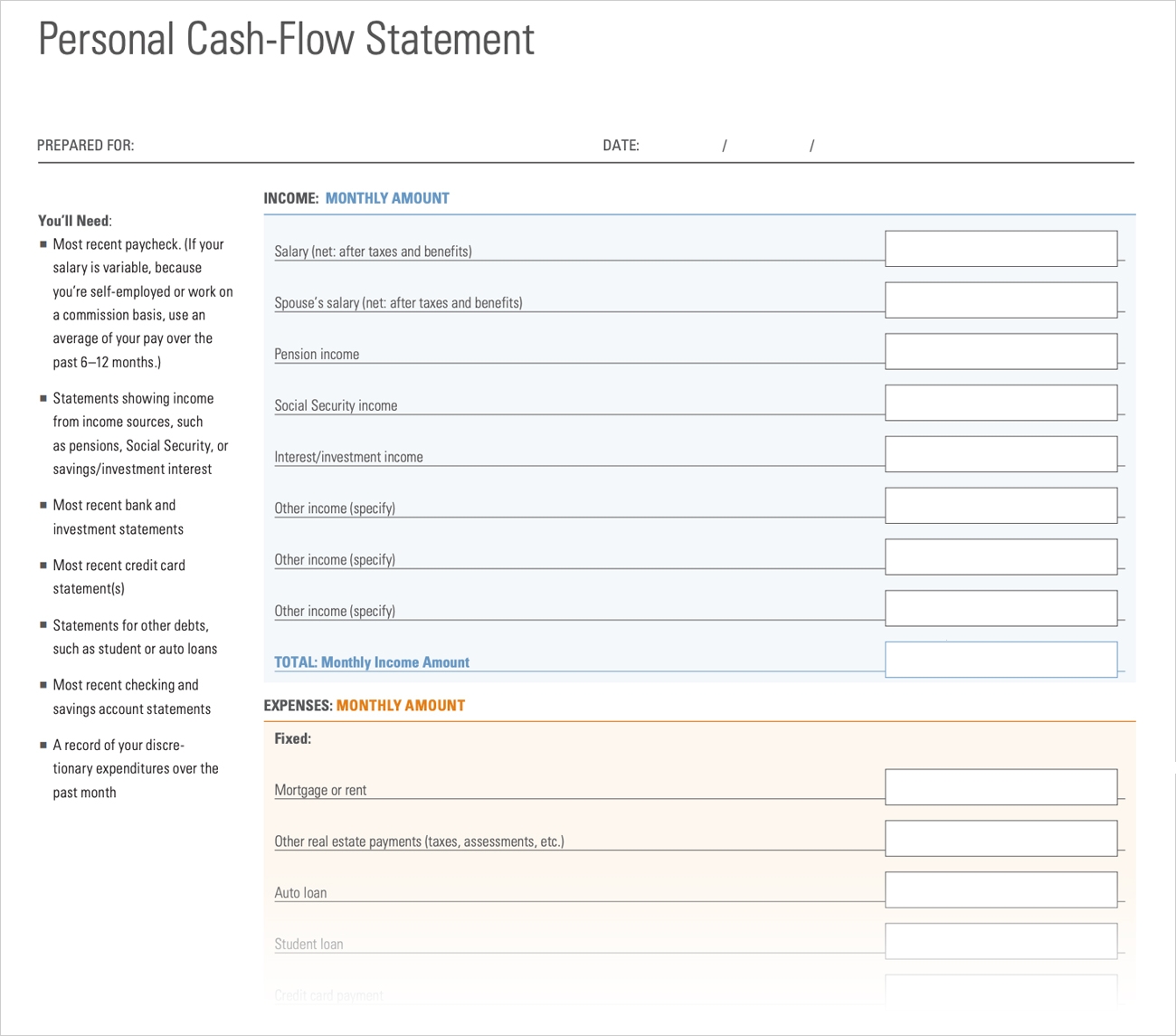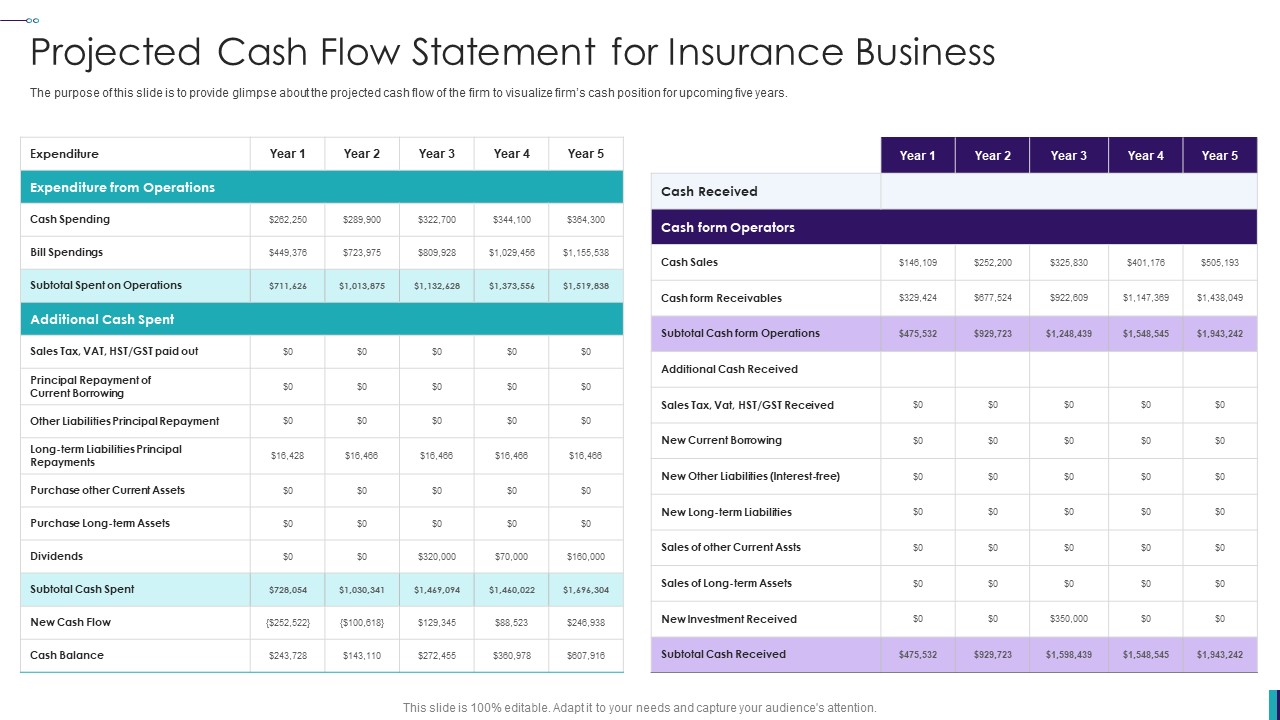

Finance
What Is A Cash Flow Hedge
Published: December 21, 2023
Learn how cash flow hedge in finance helps businesses manage financial risk and protect against fluctuating cash flows. Understand the benefits and implications of implementing cash flow hedging strategies.
(Many of the links in this article redirect to a specific reviewed product. Your purchase of these products through affiliate links helps to generate commission for LiveWell, at no extra cost. Learn more)
Table of Contents
- Introduction
- Understanding Cash Flow Hedge
- The Purpose of Cash Flow Hedging
- Benefits and Risks of Cash Flow Hedging
- Determining Eligible Hedged Items
- Identifying Derivative Instruments for Cash Flow Hedge
- Measurement and Accounting of Cash Flow Hedges
- Effectiveness Assessment of Cash Flow Hedge
- Reporting Requirements for Cash Flow Hedge
- Examples of Cash Flow Hedging Techniques
- Conclusion
Introduction
Finance plays a vital role in any organization, as it is the backbone that supports the growth and stability of businesses. One crucial aspect of financial management is hedging, which involves managing and mitigating risks associated with uncertain future cash flows. Cash flow hedging is a strategic financial practice that aims to protect an entity from the potential adverse effects of changes in cash flows.
Cash flow hedging involves the use of various financial instruments, such as derivatives, to offset the impact of fluctuations in cash flow. This technique enables companies to manage their exposure to risks arising from changes in foreign currency exchange rates, interest rates, and commodity prices. By implementing a cash flow hedging strategy, organizations can safeguard their profitability, improve financial stability, and enhance investor confidence.
Understanding cash flow hedging is essential for companies across different industries, as it allows them to proactively address potential risks and volatility in the market. By effectively managing cash flow fluctuations, organizations can ensure that they have a predictable and stable financial position, enabling them to make informed business decisions and pursue growth opportunities.
This article aims to provide a comprehensive overview of cash flow hedging, including its purpose, benefits, risks, measurement, and reporting requirements. We will delve into the intricacies of determining eligible hedged items and identifying suitable derivative instruments for cash flow hedge transactions. Additionally, we will explore the assessment of hedge effectiveness and provide examples of cash flow hedging techniques commonly utilized by organizations.
Whether you are a finance professional, an entrepreneur, or an investor, gaining a solid understanding of cash flow hedging can empower you to navigate the complexities of financial markets and make sound financial decisions. So let’s dive in and explore the world of cash flow hedging, unraveling its potential benefits and shedding light on the key considerations for successful implementation.
Understanding Cash Flow Hedge
Cash flow hedging is a risk management technique that aims to offset potential variations in future cash flows resulting from fluctuations in underlying risk parameters. These risk parameters could include changes in foreign currency exchange rates, interest rates, or commodity prices. By implementing a cash flow hedge, companies seek to protect themselves from adverse movements in these variables.
When a company engages in a cash flow hedge, it enters into a derivative contract that is specifically designed to offset the risk associated with a particular cash flow item. The derivative contract can be customized to match the cash flow item’s timing, amount, and risk exposure. By doing so, the company can reduce the uncertainty and volatility of its future cash flows, providing stability and predictability in financial planning and decision-making.
It’s important to note that a cash flow hedge does not eliminate the risk itself; rather, it aims to mitigate the potential impact of the risk on cash flows. The objective is to have the gain or loss on the hedging instrument offset the loss or gain on the hedged item, which helps to stabilize the overall financial position of the company.
For example, consider a multinational company that expects to receive payment in a foreign currency in the future. To hedge against the currency exchange rate risk, the company may enter into a derivative contract, such as a foreign currency forward or option, to lock in a fixed exchange rate. If the exchange rate of the foreign currency moves unfavorably, the gain on the derivative contract can offset the loss on the cash inflow, thus minimizing the impact on the company’s financial performance.
It’s worth noting that cash flow hedging is primarily used for anticipated cash flows that are highly probable to occur. This means that the hedged item must be highly likely to materialize, and it should be reliably measurable. In addition, entities must demonstrate that the hedging relationship between the hedged item and the hedging instrument is effective in offsetting the changes in cash flows resulting from the designated risk.
By implementing cash flow hedging techniques, companies can proactively manage and reduce their exposure to various financial risks, ensuring a more predictable and stable cash flow stream. This enables organizations to make better-informed financial decisions, mitigate potential losses, and protect their profitability in an uncertain and volatile market environment.
The Purpose of Cash Flow Hedging
The purpose of cash flow hedging is to protect companies from potential adverse effects of fluctuations in cash flows resulting from changes in underlying risk parameters. By engaging in cash flow hedging, organizations aim to minimize the impact of these risks on their financial performance and ensure stability and predictability in their cash flow stream.
One of the primary objectives of cash flow hedging is to manage foreign currency risk. In an increasingly globalized economy, companies often engage in international trade and have cash flow exposures in multiple currencies. Fluctuations in foreign currency exchange rates can significantly impact a company’s cash flows, especially for those involved in import/export activities or multinational operations. Cash flow hedging allows companies to offset the risk of adverse currency movements by entering into derivative contracts tailored to the specific currency exposure.
Another purpose of cash flow hedging is to manage interest rate risk. Companies that have outstanding debt or variable rate loans are exposed to the risk of interest rate fluctuations. By entering into derivative contracts, such as interest rate swaps or futures, companies can hedge against this risk and protect themselves from potential increases in interest rates that could adversely affect their cash flows and increase borrowing costs.
Cash flow hedging also serves the purpose of managing commodity price risk. Companies in industries such as agriculture, energy, or manufacturing rely on the pricing of commodities for their revenue and cost structures. Fluctuations in commodity prices can have a significant impact on cash flows and profitability. Through derivative contracts, such as futures or options, companies can hedge against these price fluctuations and safeguard their financial performance.
Furthermore, cash flow hedging aids in managing other financial risks, such as credit risk and liquidity risk. By hedging against credit risk, companies can protect themselves from potential default on receivables, ensuring a steady cash flow from customers. Liquidity risk hedging involves utilizing derivative instruments, such as futures or options, to secure funding or manage cash positions effectively, particularly during challenging market conditions.
The key purpose of cash flow hedging is to provide stability, predictability, and risk reduction for businesses. By implementing a robust hedging strategy, companies can reduce uncertainty, protect profitability, and make informed financial decisions. The ability to manage and mitigate the impact of uncertainties results in improved financial planning, enhanced investor confidence, and a competitive advantage in the market. Additionally, cash flow hedging helps companies comply with regulatory requirements and accounting standards, ensuring transparency and accuracy in financial reporting.
In summary, the purpose of cash flow hedging is to minimize the potential adverse effects of fluctuations in cash flows resulting from changes in underlying risk parameters. It allows companies to manage foreign currency, interest rate, commodity price, credit, and liquidity risks, thereby ensuring stability, predictability, and better overall financial performance.
Benefits and Risks of Cash Flow Hedging
Cash flow hedging offers several benefits to organizations, allowing them to effectively manage risks and enhance their financial performance. However, it is important to recognize that cash flow hedging also entails certain risks and considerations. Let’s explore the benefits and risks associated with cash flow hedging.
Benefits of Cash Flow Hedging
1. Risk Mitigation: Cash flow hedging enables companies to protect themselves from the adverse effects of fluctuations in underlying risk parameters, such as foreign currency exchange rates, interest rates, and commodity prices. By implementing an effective hedging strategy, organizations can minimize the impact of these risks on their cash flows and financial performance.
2. Stability in Cash Flow: Cash flow hedging helps organizations achieve stability and predictability in their cash flow stream. By hedging against potential fluctuations, companies can have a more reliable and consistent cash flow, allowing for better financial planning and decision-making.
3. Protection of Profitability: Fluctuations in risk parameters can have a significant impact on a company’s profitability. Cash flow hedging protects against potential losses and ensures that companies can maintain their desired levels of profitability even in challenging market conditions.
4. Improved Financial Decision-Making: Cash flow hedging provides companies with better visibility and understanding of their future cash flows. This allows for more informed financial decision-making, including investment strategies, debt management, and capital allocation.
5. Enhanced Investor Confidence: Effective cash flow hedging demonstrates a proactive approach to risk management, which can enhance investor confidence in the company’s financial stability. Investors are more likely to support organizations that have mitigated potential risks through strategic hedging practices.
Risks of Cash Flow Hedging
1. Ineffectiveness of Hedging Instruments: The effectiveness of a cash flow hedge depends on the correlation between the hedging instrument and the hedged item. If the hedging instrument does not accurately offset the changes in cash flows, the intended risk mitigation may not be achieved, resulting in potential financial losses.
2. Basis Risk: Basis risk arises when there is a discrepancy between the hedged item and the hedging instrument, leading to imperfect correlation. This can occur due to differences in timing, pricing, or other factors, which may weaken the effectiveness of the hedge and expose the company to residual risks.
3. Cost of Hedging: Engaging in cash flow hedging involves costs, including transaction fees, margin requirements, and premiums for derivative instruments. These costs can impact the overall financial performance of the company and need to be carefully considered in the hedging strategy.
4. Complexity and Volatility of Derivative Instruments: Derivative instruments used in cash flow hedging can be complex and subject to market volatility. It is crucial for organizations to have a thorough understanding of these instruments and the associated risks to avoid potential pitfalls and financial losses.
5. Accounting and Regulatory Compliance: Cash flow hedging requires compliance with accounting standards and regulatory requirements, which can be complex and time-consuming. Companies must adhere to guidelines set by financial authorities and accurately report their hedging transactions and effectiveness assessments.
Despite the potential risks, cash flow hedging, when well-executed, offers significant benefits, enabling organizations to manage risks effectively, achieve stability in cash flows, protect profitability, make informed financial decisions, and build investor confidence. Managing the risks associated with cash flow hedging requires careful assessment, monitoring, and adaptability to changing market conditions.
Determining Eligible Hedged Items
When implementing a cash flow hedging strategy, it is crucial to determine the eligible hedged items accurately. Eligible hedged items are specific cash flow exposures that meet certain criteria and can be reliably measured. Let’s explore the key considerations in determining eligible hedged items:
High Probability of Occurrence
Hedged items must have a high probability of occurring in the future. This means that the cash flow exposure being hedged should be highly likely to materialize based on existing contracts, committed transactions, or forecasted business activities. The likelihood of occurrence should be assessed based on objective evidence, past transactions, and reliable forecasts.
Reliability of Measurement
Eligible hedged items should be highly measurable and reliably quantifiable. The cash flow exposure should have clear and well-defined parameters, such as timing, amount, and currency. The ability to measure the hedged item accurately is essential for evaluating the effectiveness of the hedge and ensuring proper accounting treatment.
Correlation with Risk Parameters
The hedged item should have a clear and identifiable relationship with the risk parameter being hedged. For example, if a company wants to hedge against fluctuations in foreign currency exchange rates, the hedged item should have a direct correlation with those exchange rate movements. The relationship between the hedged item and the risk parameter should be established based on historical data and reasonable expectations.
Significant Exposure to Risks
Eligible hedged items should represent significant cash flow exposures that can potentially materially impact the financial performance of the company. This ensures that the hedging strategy focuses on managing meaningful risks rather than insignificant or immaterial fluctuations. The significance of the exposure should be assessed based on quantitative analysis, financial impact assessments, and risk management objectives.
Consistency with Risk Management Policies
The determination of eligible hedged items should align with the company’s overall risk management policies and objectives. The selection should be in line with the organization’s risk appetite, business strategy, and financial goals. This ensures that the hedging strategy is consistent with the broader risk management framework and contributes to the company’s overall risk mitigation efforts.
It is important for organizations to carefully analyze and evaluate their cash flow exposures to determine eligible hedged items. This requires a thorough understanding of the business activities, contractual arrangements, forecasted cash flows, and the potential impact of risk parameters. By selecting eligible hedged items that meet the criteria mentioned above, companies can effectively manage their cash flow risks, ensure accurate accounting treatment, and protect their financial performance.
Identifying Derivative Instruments for Cash Flow Hedge
Once eligible hedged items are determined, the next step in a cash flow hedging strategy is to identify suitable derivative instruments that can effectively offset the associated risk. Derivative instruments are financial contracts whose value is derived from an underlying asset or benchmark. Let’s explore the key considerations in identifying derivative instruments for cash flow hedging:
Foreign Currency Hedging
For hedging foreign currency risk, companies can utilize derivative instruments such as forward contracts, options, or currency swaps. A forward contract allows companies to lock in a future exchange rate for a specified currency, while options provide the opportunity (but not the obligation) to buy or sell currency at a predetermined rate. Currency swaps involve exchanging cash flows in different currencies to mitigate foreign currency exposure.
Interest Rate Hedging
When hedging against interest rate risk, companies can use interest rate swaps, futures contracts, or options. Interest rate swaps involve exchanging fixed and variable interest rate cash flows to manage interest rate fluctuations. Futures contracts are standardized contracts to buy or sell an asset at a predetermined future price, effectively hedging against changes in interest rates. Options provide the right (but not the obligation) to buy or sell interest rate futures at a specified price.
Commodity Hedging
To hedge price fluctuations in commodities, companies can employ derivative instruments such as futures contracts or options. Futures contracts allow companies to lock in future prices for the underlying commodity, while options provide the ability to buy or sell commodities at specified prices. These instruments enable companies to mitigate the risks associated with volatile commodity prices.
Other Hedging Instruments
In addition to the specific risk exposures mentioned above, companies can utilize other derivative instruments to hedge various cash flow risks. For example, credit default swaps can be used to manage credit risk by offsetting potential losses arising from the default of a counterparty. Swaptions provide the right (but not the obligation) to enter into an interest rate swap at a specified future date.
Cost and Liquidity Considerations
When identifying derivative instruments, companies need to consider the cost and liquidity aspects. Derivative contracts may involve associated fees, such as transaction costs and margin requirements, which impact the overall financial impact of the hedging strategy. Additionally, companies should consider the availability and liquidity of the chosen derivative instruments in the market to ensure effective execution of the hedge.
It’s important for organizations to carefully assess their risk exposure, financial objectives, and market conditions when identifying derivative instruments for cash flow hedging. Seeking advice from financial professionals or consultants with expertise in derivative markets can be valuable in selecting appropriate instruments that align with the company’s risk management strategy and objectives.
Measurement and Accounting of Cash Flow Hedges
Effective measurement and accurate accounting of cash flow hedges are crucial for financial reporting and compliance with accounting standards. Companies need to ensure that the hedging transactions and related instruments are appropriately measured, recorded, and reported in their financial statements. Let’s explore the key aspects of the measurement and accounting of cash flow hedges:
Fair Value Measurement
Derivative instruments used in cash flow hedging are typically measured at fair value on the balance sheet. Fair value is the price that would be received to sell the instrument or paid to transfer it in an orderly transaction between market participants at the measurement date. Companies need to regularly assess the fair value of their hedging instruments and record any changes in fair value in the financial statements, either in the income statement or other comprehensive income.
Hedge Effectiveness Assessment
To ensure the validity and effectiveness of cash flow hedges, companies must perform periodic hedge effectiveness assessments. This involves comparing the changes in fair value or cash flows of the hedging instrument with the changes in the value of the hedged item. The objective is to determine whether the hedging relationship is effective in offsetting the designated risk and achieving the desired risk reduction. The assessment should be performed on an ongoing basis, and any ineffectiveness should be recognized and recorded in the financial statements.
Accumulated Other Comprehensive Income (AOCI)
Changes in fair value that are determined to be effective in cash flow hedges are typically recorded in a separate component of equity called Accumulated Other Comprehensive Income (AOCI). This allows for the recognition of unrealized gains or losses on hedging instruments until the hedged item affects the income statement. Once the hedged item affects the income statement, the accumulated gains or losses in AOCI are reclassified to the income statement, offsetting any changes in the value of the hedged item.
Timing of Recognition in the Income Statement
When the hedged cash flow affects the income statement, the gains or losses from the hedging instrument that were previously recorded in AOCI are reclassified to the income statement. This ensures that the realized gains or losses from the hedging transaction are recognized in the same period as the corresponding cash flow of the hedged item. The timing of recognition in the income statement should align with the timing of the hedged item’s impact on the financial statements.
Disclosure and Reporting
Companies are required to provide detailed disclosures in their financial statements regarding their cash flow hedging activities. This includes information about the objectives, strategies, and risks associated with the hedging transactions. Additionally, companies should disclose the fair value of their derivative instruments, the impact of hedge accounting on the financial statements, and any material changes in the hedging relationships.
Accurate measurement and accounting of cash flow hedges are critical for transparent financial reporting and compliance with accounting standards. Companies must diligently assess the fair value of their derivative instruments, perform regular hedge effectiveness assessments, appropriately record gains or losses in AOCI and reclassify them to the income statement when necessary, and provide comprehensive disclosures of their hedging activities in their financial statements.
Effectiveness Assessment of Cash Flow Hedge
Effectiveness assessment is a crucial step in cash flow hedging to ensure that the hedging relationship between the hedged item and the derivative instrument is effective in offsetting changes in cash flows resulting from the designated risk. By evaluating the effectiveness of the hedge, companies can determine whether the intended risk reduction is being achieved and make any necessary adjustments to their hedging strategies. Let’s delve into the key aspects of effectiveness assessment in cash flow hedging:
Measurement Methods
There are several methods available for assessing the effectiveness of a cash flow hedge, including the dollar offset method, regression analysis, or hypothetical derivative method. The choice of measurement method depends on the nature of the hedging relationship and the availability of data. The goal is to compare the changes in fair value or cash flows of the hedging instrument with the changes in the value of the hedged item due to the designated risk exposure.
Qualitative Assessment
In addition to quantitative assessment, a qualitative assessment of the hedge effectiveness is also essential. This involves considering the economic relationship between the hedged item and the hedging instrument and evaluating how well the hedge aligns with the company’s risk management objectives and strategies. Factors such as the reliability of the data, the historical relationship between the hedged item and the hedging instrument, and the responsiveness of the hedge to changes in the designated risk should be considered.
Threshold and Tolerance Levels
Companies often establish threshold and tolerance levels to determine the acceptable range of hedge ineffectiveness. These levels are set based on the company’s risk appetite and financial reporting requirements. If the ineffectiveness falls within the acceptable range, it is considered immaterial and does not require any adjustment. However, if the hedge is determined to be ineffective beyond the tolerance level, companies need to recognize and account for the ineffectiveness in their financial statements.
Adjustments and Rebalancing
If the assessment reveals that the hedge is no longer effective due to changes in the risk exposure or other factors, companies may need to make adjustments or rebalance their hedge positions. This could involve modifying or terminating existing derivative contracts or entering into new contracts to realign the hedging relationship with the desired risk profile. Adjustments and rebalancing ensure that the hedging strategy remains effective in achieving its intended risk reduction objectives.
Ongoing Monitoring and Documentation
Effectiveness assessment is not a one-time task but requires ongoing monitoring and documentation. It is crucial for companies to have robust processes and systems in place to track and analyze the effectiveness of their cash flow hedges continuously. Documentation of the assessment results, methodologies used, and the rationale behind any adjustments or rebalancing is essential for compliance purposes and to provide transparency in financial reporting.
The effectiveness assessment of cash flow hedges is a critical component of successful hedging strategies. By regularly evaluating the hedge relationship and making necessary adjustments, companies can ensure that their cash flow hedging activities align with their risk management objectives, comply with accounting standards, and effectively mitigate the impact of fluctuations in cash flows resulting from the designated risk exposure.
Reporting Requirements for Cash Flow Hedge
Reporting requirements for cash flow hedges are governed by accounting standards and regulatory frameworks to ensure accurate and transparent financial reporting. Companies engaged in cash flow hedging activities need to fulfill specific disclosure and reporting obligations. Let’s explore the key reporting requirements for cash flow hedge transactions:
Qualifying Criteria
Companies need to clearly define the qualifying criteria for cash flow hedges in their financial statements. This includes specifying the risk exposures being hedged, the type of eligible hedged items, and the derivative instruments used. The qualifying criteria should align with the company’s risk management policies and objectives and comply with accounting standards such as International Financial Reporting Standards (IFRS) or Generally Accepted Accounting Principles (GAAP).
Hedge Designation and Documentation
Companies are required to document the key elements of the hedging relationship in detail. This includes identifying the hedged item, the nature of the risk exposure, and how the hedging instrument is expected to offset the changes in the cash flows. The documentation should clearly demonstrate the effectiveness of the hedge and the intention to hedge a specific risk exposure. Proper hedge designation and documentation are crucial for compliance and auditing purposes.
Disclosure of Hedging Objectives and Strategies
Companies need to disclose the objectives and strategies of their cash flow hedging activities in their financial statements. This includes providing an explanation of the purpose and rationale behind the hedging transactions, the risks being managed, and the methods used for effectiveness assessment. These disclosures help stakeholders, including investors and financial analysts, understand the company’s risk management practices and evaluate the impact of hedging activities on financial performance.
Fair Value Measurement and Reporting
Derivative instruments used in cash flow hedges are required to be measured at fair value and reported in the financial statements. Companies need to disclose the fair value of their derivative instruments, any changes in fair value, and the impact on financial performance. Additionally, the methodology used to determine fair value, including any significant assumptions or valuation techniques, should be disclosed to provide transparency and ensure consistency in financial reporting.
Hedge Effectiveness Assessment
Companies are obligated to disclose the results of hedge effectiveness assessments performed during the reporting period. This includes explaining the measurement methods used, the results of the assessment, any adjustments made, and the impact on financial statements. The disclosure should provide sufficient information to allow users of the financial statements to understand the extent and impact of the hedge effectiveness on the company’s financial performance.
Changes in Hedge Relationships
Any changes in hedge relationships, such as modifications or terminations of hedging transactions, need to be disclosed in the financial statements. Companies should provide the rationale behind the changes, the impact on financial performance, and any considerations related to discontinuation or finding alternative hedging strategies. The disclosure should highlight the company’s proactive approach to managing and adapting to changing market conditions.
Meeting the reporting requirements for cash flow hedging is crucial for transparent financial reporting, compliance with accounting standards, and providing stakeholders with a clear understanding of the company’s hedging activities. Companies should ensure proper documentation, disclosure of objectives and strategies, fair value measurement and reporting, effective assessment results, and transparent communication of changes in hedge relationships in their financial statements.
Examples of Cash Flow Hedging Techniques
There are various cash flow hedging techniques that companies can employ to manage different types of risk exposures. These techniques utilize derivative instruments to offset the potential impact of fluctuations in cash flows resulting from changes in underlying risk parameters. Let’s explore some common examples of cash flow hedging techniques:
Foreign Currency Forward Contracts
Companies engaged in international trade can use foreign currency forward contracts to hedge against foreign exchange rate risk. This involves entering into a contract to exchange a specific amount of one currency for another at a predetermined future date and exchange rate. By locking in the rate, companies can protect themselves from adverse currency fluctuations and ensure a predictable cash flow in their base currency.
Interest Rate Swaps
Companies with variable rate loans or debt can utilize interest rate swaps to hedge against fluctuations in interest rates. An interest rate swap involves exchanging cash flows based on fixed and variable interest rates. By swapping a variable interest rate for a fixed rate, or vice versa, companies can offset the potential impact of interest rate changes on their cash flows, thereby ensuring stability and predictability in interest expenses or income.
Commodity Futures Contracts
Businesses that are exposed to volatility in commodity prices can employ commodity futures contracts as a cash flow hedging technique. Futures contracts allow companies to lock in future prices for commodities like oil, natural gas, or agricultural products. By fixing the purchase or sale price of the commodity in advance, companies can protect themselves from potential price fluctuations and ensure stability in their cash flows related to commodity transactions.
Option Contracts
Option contracts provide companies with the right, but not the obligation, to buy or sell an underlying asset at a specified price during a predetermined period. Companies can use options as a cash flow hedging technique to protect against adverse price movements or uncertain cash flows. For example, a company can purchase a put option to hedge against the risk of a particular asset’s price going down, ensuring a minimum sell price in the future.
Net Investment Hedge
A net investment hedge is a hedging technique that multinational companies can use to manage their exposure to changes in exchange rates. It involves hedging the foreign currency exposure of a subsidiary’s net investment in a foreign operation. By entering into derivative contracts, such as forward contracts or currency swaps, the company hedges against potential exchange rate fluctuations, thereby protecting the value of their net investment in the foreign subsidiary.
Invoice Currency Hedging
Companies that invoice their customers or receive payments in foreign currencies can employ invoice currency hedging techniques. This involves matching the currency of the invoice with the currency of the cash flow to avoid conversion losses or gains due to currency fluctuations. By aligning the invoicing and cash receipt currencies, companies can minimize the impact of foreign exchange rate movements on their cash flows and ensure stability in revenue or receivables.
These examples represent just a few of the many cash flow hedging techniques available to companies. The selection of the appropriate hedging technique depends on the nature of the risk exposure, the company’s risk management strategy, and market conditions. It is essential for companies to carefully evaluate their risk exposures and consider the effectiveness and costs associated with each hedging technique before implementing a cash flow hedge.
Conclusion
Cash flow hedging is a vital risk management tool that allows companies to proactively manage and mitigate the potential adverse effects of fluctuations in cash flows resulting from changes in underlying risk parameters. By employing various cash flow hedging techniques, organizations can safeguard their financial performance, ensure stability in cash flow streams, and make informed financial decisions.
In this article, we explored the fundamentals of cash flow hedging, understanding its purpose, benefits, and risks. We discussed the importance of determining eligible hedged items and identifying suitable derivative instruments to effectively offset the associated risks. We also delved into the measurement and accounting of cash flow hedges, highlighting the significance of fair value measurement, effectiveness assessment, and proper reporting in financial statements.
When implemented effectively, cash flow hedging offers numerous advantages. It allows companies to mitigate risks, achieve stability in cash flows, protect profitability, and enhance investor confidence. Cash flow hedging assists with managing exposures such as foreign currency risk, interest rate risk, and commodity price risk, among others. It also aids in compliance with accounting standards and regulatory requirements.
However, cash flow hedging comes with inherent risks, such as ineffectiveness of hedging instruments, basis risk, and the complexity of derivative instruments. Companies must carefully navigate these risks and consider the costs and liquidity implications associated with implementing hedging strategies.
To maximize the benefits of cash flow hedging, ongoing monitoring, hedge effectiveness assessments, and necessary adjustments are critical. Companies must adhere to reporting requirements, clearly disclose their hedging objectives and strategies, and provide transparent information about the results of hedge assessments and changes in hedge relationships.
Ultimately, cash flow hedging empowers companies to effectively manage uncertainties, protect financial performance, and optimize their risk management strategies. By harnessing the power of cash flow hedging techniques discussed in this article, businesses can navigate the complexities of volatile markets, make sound financial decisions, and achieve long-term success.














